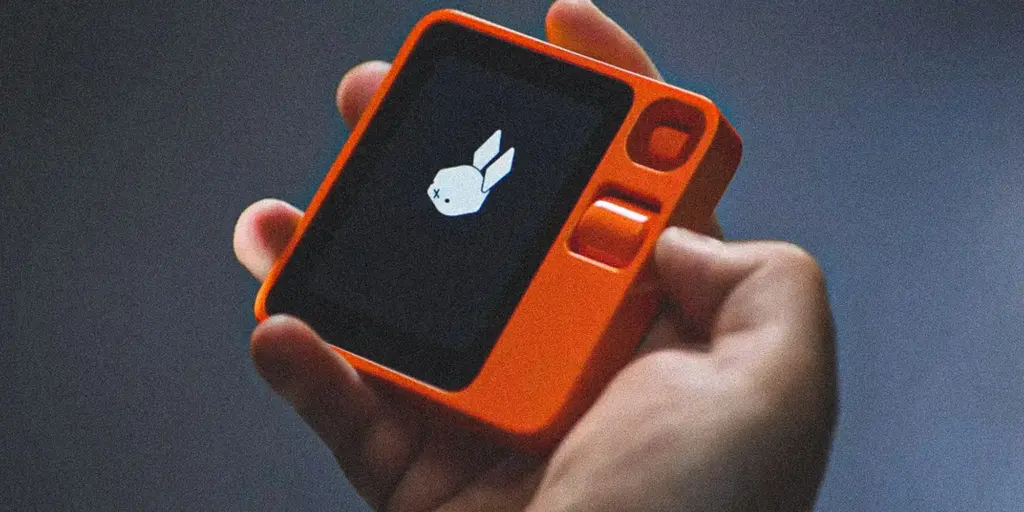In an age defined by touchscreens and seamless virtual experiences, a subtle revolution is underway—the resurgence of physical things in a predominantly digital world powered by digital interfaces. Is it now time for consumers and physical product companies to prioritise tactile user interaction over the confines of digital apps?
An app-free world and the coming interface revolution
Technological innovation is witnessing a departure from the app-centric paradigm that has long dominated digital interactions – essentially since 2007 and the launch of the iPhone. As users navigate the complexities of modern technology, they find themselves increasingly disillusioned with the relentless barrage of apps vying for their attention.
Screen fatigue, information overload, and privacy concerns have led to an era where simplicity, tangibility, and meaningful engagement are valued above all. This heralds a new interface revolution, one that ranks the seamless integration of physical things and digital experiences above all.
In an app-free world, the future of technology lies not solely in the palm of your hand but in the immersive interaction with the world around you.
The current state of consumer electronics
In the current consumer electronics landscape, smartphones have become ubiquitous, offering instant gratification in the form of easy access to a digital ecosystem powered by applications. These software programs have revolutionised how we communicate, work, shop, and entertain ourselves.
From social media platforms to productivity tools, from fitness trackers to mobile games, apps have permeated nearly every aspect of our daily lives. They offer convenience, connectivity, and endless possibilities at our fingertips. However, as the app market has exploded with millions of offerings catering to every conceivable need, users are grappling with the unintended consequences of this digital inundation.
The surge in app availability has resulted in ‘app exhaustion’ as users find themselves inundated with countless options, constant notifications, and demands on their attention. Moreover, concerns over privacy, data security, and the addictive nature of smartphone use have prompted many to re-evaluate their relationship with technology and seek alternatives to the app-centric model.
Moving away from apps towards interfacing with physical things
Amidst growing dissatisfaction with the app-dominated digital landscape, a new trend is taking shape: leaving the virtual confines of our screens and embracing the tangible world of interacting with physical things.
This emerging trend represents a paradigm shift in how we engage with technology. It prioritises tactile feedback, intuitive targeted interfaces, and sensory experiences over the abstract digital interfaces of smartphones and tablets. From retro-inspired gadgets to smart appliances, from wearable devices to automotive interfaces, innovators are exploring new ways to bridge the gap between the digital and physical realms, offering users a more immersive and intuitive interaction with their devices.

This shift towards interface innovation with physical products signifies a broader cultural movement towards simplicity, authenticity, and human-centred, emotive design in the digital age. As we navigate this new world of interface revolution, the possibilities for reimagining our relationship with technology are endless, inviting us to explore new horizons of creativity, connectivity, and human experience.
Signs and trend signals
Let’s explore this paradigm shift by examining a selection of ground-breaking examples that showcase the move towards physical interface innovation and the diverse ways in which they redefine our relationship with technology.
Rabbit R1
The Rabbit R1, showcased at CES 2024, represents a departure from the conventional app-centric model towards tangible interface experiences. Unlike typical smartphones, the R1 is not yet another app-laden device – it’s an AI-powered personal assistant designed to streamline digital interactions.
It bridges the gap between the digital and physical worlds by offering users a physical and digital integrated middleman between them and their digital (app) world, powered by what they call their ‘Large Action Model’.

Smart electric toothbrushes
Many apps have been developed promising to help us with our dental health regimes, but take-up has been slow. OralB have started taking a different approach, building smart interface into their products themselves. This looks like a promising route forward that we’re keen to see evolve.

Smart fridges
Integrating technology into everyday appliances has transformed how we interact with our homes, and the smart refrigerator is a prime example of this innovation. Beyond its primary function of preserving food, a smart refrigerator merges advanced technology platforms and internet connectivity to enhance the kitchen experience, in a very tailored experience. Here the emphasis isn’t on groundbreaking technology, it’s on specificity of embodiment and activating (discovering) new behaviours.
Even tech giants like Samsung are pivoting towards physical interfaces, as evidenced by their decision to embed screens directly onto refrigerators rather than relying solely on smartphone apps. By leveraging the touchscreen interface, users can access apps, browse recipes, create shopping lists, and even stream music or videos without needing additional devices or apps. And that’s even before we start playing with Gen AI which could offer amazingly engaging exploration right there and then.
The smart refrigerator epitomises the shift towards tangible interface experiences, where users prefer the convenience and immediacy of interacting directly with their appliances rather than navigating through cumbersome smartphone apps.
Where do voice assistants fit into this?
The ubiquity of voice assistants like Siri, Alexa, and Google Assistant reflects a shift towards a harmonious blend of tangible and virtual experiences. Voice assistants play a crucial role in bridging the gap between digital and tangible interactions. While traditional apps require users to navigate through digital screens, voice interfaces offer a more direct and hands-free approach to accessing information and executing tasks.
By eliminating the need for physical touch or visual interfaces, voice assistants align with the trend toward intuitive and effortless interaction methods. As consumers seek more seamless and immersive experiences, voice interfaces complement physical interfaces by providing an alternative means of control and access to digital services.
While the focus may shift towards physical interfaces, voice assistants are complementary tools that enhance the overall user experience and contribute to the broader evolution of interface innovation.
What about AI?
Robin Ferraby, Director of Consumer at 42T says, “As artificial intelligence continues to permeate every aspect of our lives, its impact on interface design cannot be overstated.”
“AI is a driving force behind the future of interface design and interaction, fundamentally reshaping how we engage with technology. At the forefront of this transformation are advancements in machine vision, sensing, tracking, and natural interfaces, which collectively empower AI-driven interfaces to deliver more intuitive, personalised, and immersive user experiences.”
Machine vision, enabled by AI algorithms, allows devices to interpret and understand visual information, opening new possibilities for interface design. From facial recognition to object detection, machine vision enables devices to perceive and respond to the visual world, facilitating seamless interactions between users and technology.
Sensing and tracking technologies complement machine vision by providing devices with the ability to perceive and respond to their surroundings in real time. Whether through sensors embedded in smartphones or wearable devices, these technologies enable devices to adapt to user behaviour, preferences, and environmental conditions, creating more responsive and context-aware interfaces.
Natural interfaces, such as voice commands and gesture recognition, represent another facet of AI-driven interfaces, offering users more intuitive and effortless means of interaction. By leveraging natural language processing and machine learning, these interfaces enable users to communicate with devices using familiar gestures and speech patterns, bridging the gap between human communication and machine interaction.
These AI-driven technologies are revolutionising interface design by prioritising simplicity, efficiency, and user-centricity. By harnessing the power of AI, interfaces can anticipate user needs, adapt to individual preferences, and deliver personalised experiences tailored to each user’s unique context and objectives.
AI-driven interfaces have the potential to transcend traditional input modalities, enabling more immersive and multi-modal interactions. For example, augmented reality (AR) interfaces leverage machine vision and sensing technologies to overlay digital information onto the physical world, blurring the lines between the digital and physical realms.
AI is shaping the future of interface design and interaction and redefining the very essence of human-machine collaboration. By harnessing the capabilities of machine vision, sensing, tracking, and natural interfaces, AI-driven interfaces offer unprecedented opportunities to create more intuitive, immersive, and user-centric experiences, paving the way for a new era of human-computer interaction.
What is the big picture for this trend?
Robin says, “We are witnessing a shift in consumer preferences that reflects a growing appreciation for tactile interfaces and tangible experiences in a digital world saturated with touchscreens. This trend signifies a cultural movement towards simplicity, authenticity, and physical human-centric design in the digital age.”
“Consumers yearn for products that engage their emotions and senses beyond the virtual, seeking experiences grounded in physicality. From retro-inspired gadgets to smart appliances and automotive interfaces, innovators are exploring new ways to bridge the gap between the digital and physical realms, offering users more immersive and intuitive interactions with their devices.”
42T product design expert and consultant, Rob Mueller adds, “This shift towards tangible interface experiences invites us to reimagine our relationship with technology, embracing the allure of tactile feedback and tangible experiences in a world inundated with touchscreen interfaces.”
While the temperature for change varies among consumers, the momentum is undeniable, signalling an opportunity for durable product companies to reimagine their offerings. Some eagerly embrace the return of physical things, while others remain tethered to the convenience of digital interfaces.
Leading towards innovation
The message is clear: invest in physical products and prioritise tactile user interaction beyond the confines of digital apps. The allure of tactile feedback and tangible experiences is resurging and offering a bridge between the physical and digital worlds.
As we explore the evolving landscape of interface innovation, durable product companies need to start initiatives with a focus on embracing tangibility in a digital world. At 42T, we specialise in solving complex technical problems through innovative solutions that seamlessly integrate design, science, and engineering.
By taking a practical learning approach and building physical prototypes with 42T to trial interface tech can be pivotal in shaping the future of technology. If you’re ready to embark on a journey of interface innovation, contact us to explore how we can collaborate to bring your vision to life.

